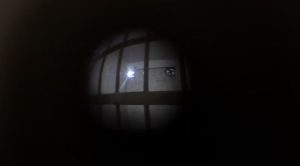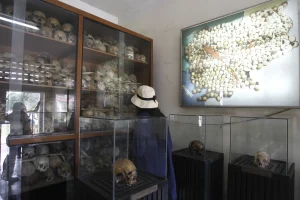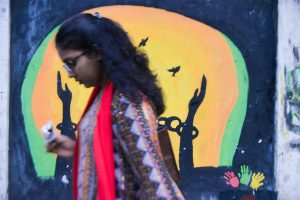Following UNESCO’s inscription of three former Khmer Rouge execution and torture sites in Cambodia to its World Heritage List, renewed calls have emerged in Bangladesh to preserve key locations tied to the reign of former prime minister Sheikh Hasina, including secret detention centres and sites of mass violence.
The interim government has taken significant steps to memorialise state atrocities committed during Hasina’s 15-year rule, including enforced disappearances, political killings, and the brutal suppression of last year’s July-August mass uprising.
In October, Yunus called for the creation of a “horror museum” to document the findings of the Inquiry Commission on Enforced Disappearances, which reported more than 1,850 cases of state-sanctioned abductions, with over 300 victims still unaccounted for.

“The second interim report of the Commission primarily highlighted the severe torture endured by victims of enforced disappearance. Upon hearing these details, Professor Yunus said there should be a ‘horror museum’ to document this,” his press secretary Shafiqul Alam stated during a briefing.
The Gonobhaban compound, once Hasina’s official residence and command centre, will be converted into the Mass Uprising Memorial Museum, according to Yunus’s directive.
The site was stormed by protesters on 5 August 2024, the same day Hasina fled Bangladesh amid intensifying unrest. Graffiti and protest notes left behind by demonstrators, including slogans such as “Khuni Hasina” (Killer Hasina), are set to be preserved as historical artefacts.
A central feature of the upcoming museum will be a reconstruction of Aynaghor (Mirror House), a clandestine facility where security agencies allegedly tortured and interrogated dissidents in secret.
While the government has not drawn a direct comparison to Cambodia’s genocide sites, the thematic overlap is stark.
Cambodia’s Tuol Sleng Genocide Museum (S-21), M-13 prison, and the Choeung Ek killing fields, now protected as UNESCO sites, were once centres of secret torture and mass execution under the Khmer Rouge. Similarly, Bangladesh’s Aynaghor, alleged mass graves, and the now-declassified Gonobhaban compound are emerging as critical sites of public memory.

International human rights experts and observers have noted the importance of such memorialisation in post-conflict justice.
“From the darkest chapters of history, we can draw strength to build a better future,” Cambodian Prime Minister Hun Manet said last week after UNESCO’s decision.
The July-August 2024 uprising, which led to the collapse of the Awami League government, resulted in over 1,400 deaths, according to UN investigators.
A leaked phone call verified by forensic analysts and published by the BBC revealed that Hasina directly ordered the use of lethal force against protesters. The BBC investigation also uncovered one of the worst mass killings in Bangladeshi history, where at least 52 people were gunned down by police in a single day in Jatrabari.
Hasina, now in exile in India, is being tried in absentia at the International Criminal Tribunal in Dhaka for crimes against humanity. Alongside her, 202 other former government and police officials have been indicted. India has not responded to Bangladesh’s request for her extradition.

Experts say the preservation of atrocity sites in Bangladesh would serve not only to honour victims and educate future generations, but also to prevent political amnesia. The Museum of the Mass Uprising is scheduled to open in phases starting next year, with advisers instructed to finalise the masterplan by December.
“This country has lived through a grave period of organised cruelty,” said Yunus in a prior statement. “We must not erase it, we must preserve it, so that it is never repeated.”

